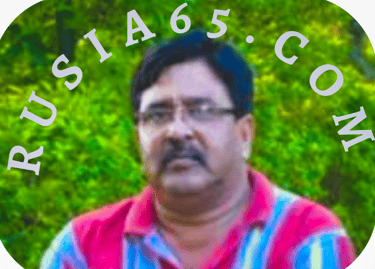Exploring Russian History: A Journey Through 1965's Events and Culture
Dive into the rich tapestry of Russian history with our blog focused on 1965. Discover significant events, cultural milestones, and everyday life during this pivotal year. Perfect for history enthusiasts and travelers seeking to understand Russia's past and its impact on the present.


Exploring Russian History: A Journey Through 1965's Events and Culture
If you want to understand Russia’s transformation in the 20th century, 1965 was a year full of pivotal events, reforms, and a culture that balanced old traditions with new hope. Let’s take a closer look at what shaped the Soviet Union in 1965, from political changes and cultural highlights to everyday life and international milestones.
A Year of Political Change and Reform
By 1965, the Soviet Union had entered a new era after Nikita Khrushchev was removed from power in late 1964. Leonid Brezhnev became the leader of the Communist Party, and Alexei Kosygin was Premier. Together, they led the country into what historians call the Era of Stagnation. But in 1965, there was still an atmosphere of cautious reform.
One of the biggest historical milestones was the launch of the 1965 Economic Reform, also known as the Kosygin Reforms. These changes aimed to improve the Soviet economy by giving managers of factories and farms more freedom and incentives for better performance, and by updating the rigid price system.
While bold at the time, these reforms delivered mixed results because they tried to combine centralized planning with elements of free-market management. Still, this period is often remembered as a rare time of increased consumer production, and life for ordinary people did improve in some ways.
30Space Achievements and International Diplomacy
1965 also marked a huge achievement for Soviet science and the global space race. On March 18, cosmonaut Alexei Leonov became the first human to perform a spacewalk, floating outside the Voskhod 2 spacecraft for 12 minutes. This marked a new chapter in space exploration and showed the USSR’s technological strength on the world stage.
Internationally, the Soviet Union played an active role as a superpower. Kosygin visited Hanoi to promise further military aid to North Vietnam, deepening Soviet involvement in the Vietnam War. Meanwhile, diplomatic tensions with the United States and worsening relations with China shaped Soviet foreign policy, as the USSR tried to maintain influence in the Communist world and compete with the West and China at the same time.
Cultural Life and Everyday Experiences
While the Soviet state promoted official ideology with posters, parades, and statues, life in Russia in 1965 was not just about politics. The period known as "The Thaw" had opened spaces for creative expression in literature, art, music, and theater, even as controls still remained. Moscow remained a cultural capital, hosting performances at the Bolshoi Theatre and housing masterpieces at the Pushkin Museum and Tretyakov Gallery.
In Leningrad (now St. Petersburg), the Hermitage Museum continued to attract visitors with its world-class art collection, and the city’s music halls and poetry readings highlighted Russia’s enduring, vibrant arts scene. Underground jazz clubs, literary cafes, and even secret discussions reflected a society that, beneath official surveillance, was full of curiosity and creativity.
At home and in rural areas, families often kept religious traditions alive in private, lighting candles or celebrating Orthodox holidays away from government eyes. Russian folk culture survived through music, dance, and storytelling, connecting new generations to their ancestors’ way of life.
The Russian People: Resilience and Hope
Despite the challenges of Soviet life—shortages, strict control, and Cold War tensions—1965 was a year when Russian resilience showed clearly. Youth culture began to shift, with young people secretly listening to Western rock music or following news of the latest space achievements. Across the country, hospitality remained important: even with restrictions, locals were often eager to meet and share stories with foreigners.
Legacy of 1965
Today, looking back at 1965 helps us see how the Soviet Union balanced pride in its past with a desire for growth and change. The reforms, space triumphs, and cultural creativity all reflected a nation in motion. Though the Soviet Union dissolved decades later, the echoes of 1965 remain a key chapter in the Russian story—a story of strength, survival, and a spirit that still fascinates the world.
